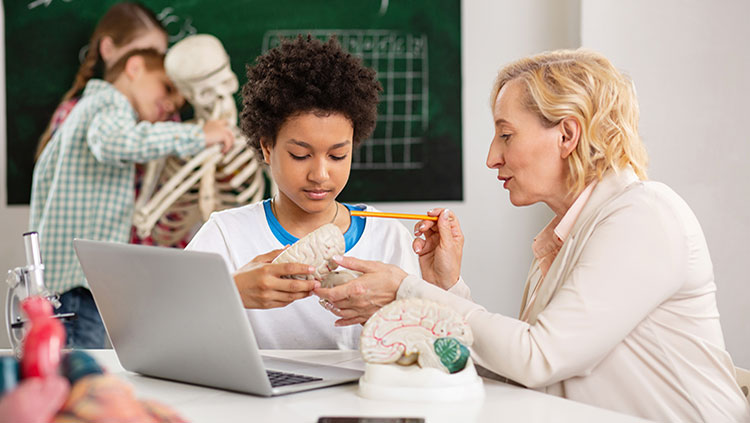Understanding how the brain absorbs information can dramatically improve how we teach, learn, and retain knowledge. Learning isn’t just about reading textbooks or listening to lectures—it’s a complex process involving attention, memory, emotion, and neural connections. The more we understand the brain’s learning mechanisms, the more effective our educational strategies become.
Let’s explore the science of learning and how your brain turns new information into lasting knowledge.
1. It All Starts With Attention
Learning begins with attention, which acts as the brain’s filter. We’re constantly bombarded with sensory information, but our brain prioritizes what we focus on. When we’re engaged and interested, our brain releases dopamine, a neurotransmitter that boosts attention and motivation.
That’s why distractions—like checking your phone while studying—can prevent information from even reaching your memory centers. Focused attention is the first step to effective learning.
2. Sensory Input Reaches The Working Memory
Once you pay attention to something, that information enters your working memory, which temporarily stores and processes data. However, working memory has limited capacity—usually able to hold 5 to 9 chunks of information at a time.
If the brain doesn’t process the information quickly or find it meaningful, it’s discarded. That’s why repetition, clarity, and breaking information into smaller pieces (also called “chunking”) can help boost retention.
3. The Role Of Active Learning And Engagement
Passively reading or listening isn’t as effective as active learning. When you engage with information—through discussion, teaching others, applying it in real-world scenarios, or using mnemonic devices—you form stronger neural connections.
This happens because synaptic plasticity, the brain’s ability to strengthen connections between neurons, improves with use. The more you practice retrieving information, the more efficiently your brain stores and recalls it.
4. Consolidation Into Long-Term Memory
For learning to stick, information must move from working memory to long-term memory, a process called memory consolidation. This typically occurs during rest and sleep. Studies show that during deep sleep, the brain replays and reorganizes new information, strengthening it into long-term storage.
That’s why cramming the night before a test isn’t effective. Spaced repetition—reviewing material over time—along with good sleep hygiene, significantly improves memory retention.
5. Emotion And Learning Are Closely Linked
Emotions play a crucial role in learning. When an experience is emotionally charged—either positively or negatively—it activates the amygdala, which interacts with the hippocampus, the region responsible for memory. As a result, emotional experiences tend to be more memorable.
Teachers and learners can use this to their advantage. Creating a positive, stress-free, and encouraging learning environment boosts emotional engagement and memory formation.
6. Mistakes Are Part Of The Process
Contrary to the fear of failure many learners face, making mistakes actually strengthens learning. When you get something wrong and then correct it, the brain updates its neural pathways—this is known as error-based learning.
Learning environments that allow safe space for failure and correction foster resilience, adaptability, and deeper understanding.
Final Thoughts
The brain is an incredibly adaptable organ, constantly reshaping itself based on experience and practice—a concept known as neuroplasticity. By understanding how the brain processes and retains information, we can tailor our learning habits to be more effective.
Whether you’re a student, teacher, or lifelong learner, embracing strategies like focused attention, active learning, spaced repetition, and emotional engagement can transform the way you absorb and retain knowledge. In the science of learning, your brain isn’t just a storage unit—it’s a dynamic engine for growth.
Take a look at these resources :
https://newsfuzhou.com/
https://perulive.net/
https://coloradonewstoday.com/
https://naturalimpactcbd.org/
https://cbdhempoilreviews.org/
https://firstpresbyterianastoria.org/
https://cnnnewstoday.com/
https://hempdispensaryhealth.com/
https://organicpurehempoil.com/
https://homewateralkali.com/
https://besharanews.com/
https://ausphreak.com/
https://relaxcbdhemp.com/
https://jungleboyweedtins.com/
https://testedhempoil.com/
https://ukbingopromotions.co.uk/
https://njknews.com/
https://hempdispensaryok.com/
https://ryehomedesign.com/
https://shaktihomestyle.com/
https://sonnah.org/
https://topeducationlounge.com/
https://ecofriendlyideas.net/
https://someinfinity.com/
https://dentalephesus.com/
https://morforyou.com/
https://mccallforall.com/
https://menshealthreview.org/
https://orangecountycahomeinfo.com/
https://nicejunehomewares.com/






